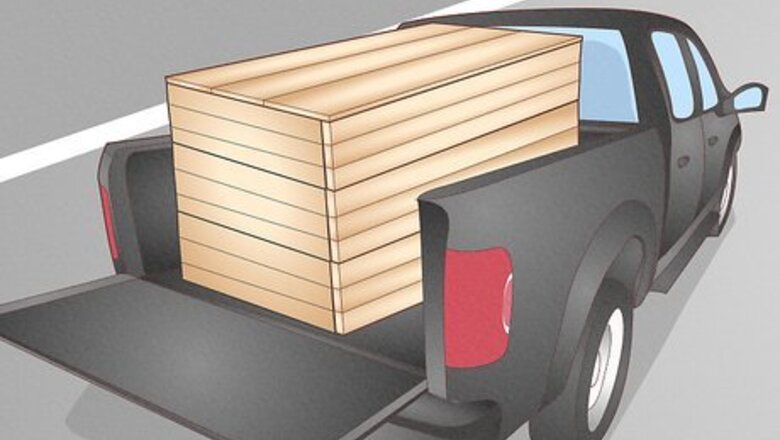
views
- To become a hotshot truck driver, you must be at least 18 (21 to operate interstate) years old, be properly licensed, and have a DOT medical certificate.
- To begin your hotshot trucking business, create an LLC (Limited Liability Company) by filing an operating agreement with your Secretary of State.
- Apply for an MC (Motor Carrier) number through the Department of Transportation or lease a number from an existing trucking company.
- While having a commercial driver's license (CDL) is not required in many states to begin hotshot trucking, it is recommended you get one for the following reasons:
- Training. A CDL can help you learn how to inspect your vehicle before or after each trip to ensure your vehicle is safe to drive, you will also learn how to safely maneuver when making turns or on narrow roads.
- Insurance. Because hotshots are commonly used for businesses, they require commercial insurance. If you do not have a CDL, insurance companies will view you as having a higher risk of getting into a collision than someone with a CDL, and therefore, charge you extra to accommodate the risks.
- Restrictions. Without a CDL, the law places a lot of restrictions on the type of hotshot that you may drive. In many states, you can only drive a hotshot of up to 26,000 pounds (because it is a combination vehicle, you will need to add both the truck and trailer's weight). In other states, you cannot tow a vehicle of more than 10,000 pounds which can create even more problems.
Select your truck’s freight size.

Match your truck to the weight of the load it can carry. Different types of medium-duty trucks and trailers handle different types of freight. Choose which types of loads you’ll be carrying for your hotshot trucking business based on the rig you have or plan to buy or lease. Class 3 vehicles have a weight limit of 10,000–14,000 pounds (4,500–6,400 kg) and are usually used by contractors for light hotshot loads. Class 4 vehicles have a limit of 14,000–16,000 pounds (6,400–7,300 kg). Class 5 vehicles can carry between 16,000–19,500 pounds (7,300–8,800 kg). You can also hook up a trailer for some hotshot jobs. Like trucks, each trailer has its own specialty for different types of freight. Lowboys are good for the heaviest loads, because of their low center of gravity. Goosenecks have a tight turn radius, which helps in construction sites with little space. Dovetails are great for hauling cars or other wheeled items.
Know your vehicle weight.
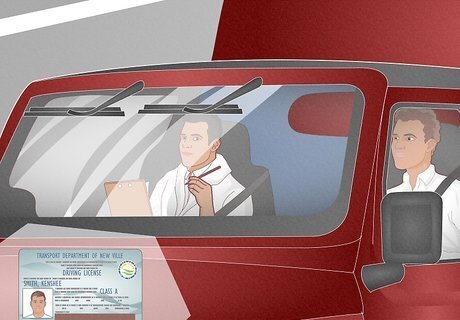
Know your vehicle weight. Without a CDL, the max vehicle weight you can drive is 26,000 lbs. To know how much you can tow, subtract 26,000 from your pick-up truck's GVWR. For example, if your truck's GVWR is 14,000 lbs, you can tow up to 12,000 lbs (26,000 - 14,000 = 12,000). If the truck and trailer together is not more than 26,000 lbs, no CDL is required. If the truck and trailer together is more than 26,000 lbs, and the trailer is not more than 10,000 lbs, a Class A or B CDL is required. If the truck and trailer together is more than 26,000 lbs, and the trailer is more than 10,000 lbs, a Class A CDL is required.
Register your trucking business with the state.

Create an LLC to avoid liability claims. It’s important to have a business structure that minimizes liability when you start hotshot trucking. Creating an LLC (Limited Liability Claim) is the easiest way to do this. To create an LLC, create an operating agreement for your business and file it with your Secretary of State. In your LLC’s operating agreement, include your management and financial structure, how profits and loss will be allocated, and what each member of your business is required to do. Most states let you create an LLC with an online form. Check your state’s government website to see how to start this process. Once your LLC is approved, you’ll receive an EIN or employer identification number which will allow you to open a business bank account, hire employees, and begin business. Every state has different policies for creating an LLC. Comply with the procedures of your specific state.
Create a company bank account.
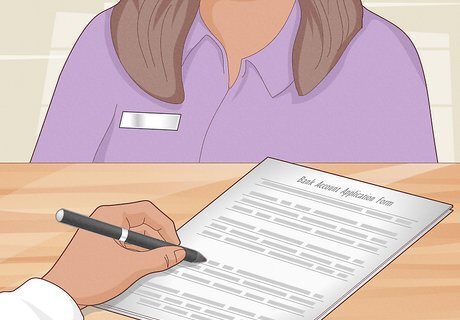
Open a business bank account to keep your commercial finances separate. Once you have obtained your LLC and EIN, go to your local bank and create an account for your hotshot trucking business. Having an account is not only essential when filing your taxes, but having a separate account makes it easier to track income and expenses. Most banks offer good business checking plans for hotshot drivers, which include features like lines of credit and advanced payment options. Ask your bank about their plans when opening your account.
Get a copy of your Motor Vehicle Record (MVR).
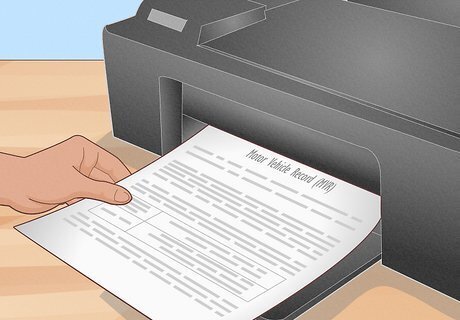
Purchase a physical copy of your MVR to prove you’re a safe driver. You need to obtain a physical copy of your driving record before you can get on the road. Without an eligible driving record, the Department of Transportation will not let you operate your trucking business. Download a digital copy of your MVR online and print it, go to the DMV and request a physical copy, or submit a request for a copy to be mailed to you. Each state has a slightly different process for obtaining physical MVRs, but almost all of them require some form of fee (which can cost anywhere from $5-35). Check your state’s government website to determine the cost of your MVR. Before you obtain your MVR, make sure your driving record is clean by expunging any traffic violations, taking any additional safety courses, and paying off any outstanding tickets.
Obtain a Transportation Workers Identification Credential (TWIC).

Get your TWIC to expand your business. A TWIC is not necessary for every hotshot trucker, but obtaining a TWIC card allows you to access secured ports like warehouses, which makes you more profitable and easier to higher. To acquire your TWIC, fill out the form online and wait for the US Transportation and Security Administration (TSA) to process your materials. The TSA can take up to 12 weeks to evaluate your application, so plan in advance. You can fill out the form for your TWIC here.
Apply for a DOT and MC number.
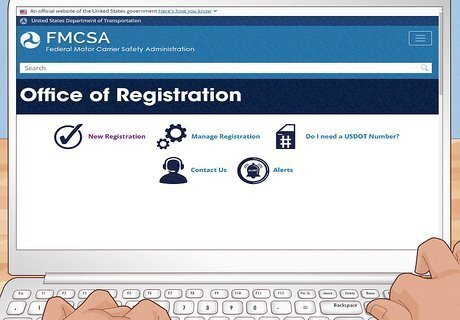
Submit for a trucking authority or lease one through another company. A Department of Transformation (DOT) and Motor Carrier (MC) number are required to legally haul cargo in the United States. Obtain these numbers by applying for them yourself or by leasing them from a larger trucking company. Leasing DOT and MC numbers will cost you a fee, but it may be worth it to avoid the copious paperwork if you’re just starting out as a hotshot driver. You can apply for your DOT number here. You can apply for your MC number here.
Purchase the necessary vehicle insurance.
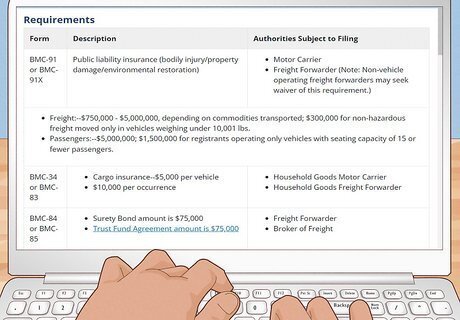
Confirm you’re properly insured, should something go wrong on the road. Check the Federal Motor Carrier Safety Administration site to confirm you have all the necessary coverage. Standard costs include public liability insurance and cargo insurance. Hotshot truck insurance premiums usually range from about $5,000-30,000 a year with an average of about $10,500. While this may seem expensive, it’s worth it and if you’re delivering loads several times a week, you’ll make up for these costs easily.
Get medically cleared to become a hotshot driver.

Pass the DOT physical exam to get your medical card. Prove you’re psychologically and physically fit to hotshot drive by scheduling a physical exam at your local clinic. The exam can be performed by any licensed doctor and it will inspect your heart health, vision, hearing, and other areas. Bring all the medications you take to your appointment. Each state has a different process for submitting DOT medical certificates. Some accept snail mail, some accept fax, and some accept email. Check the best way to submit your DOT results here. DOT medical cards are valid for up to 2 years before you renew them. Some doctors may also issue a medical examiner’s certificate for a period of up to 24 months if they believe you have a condition (like high blood pressure) that needs to be monitored.
Purchase or lease the necessary equipment.
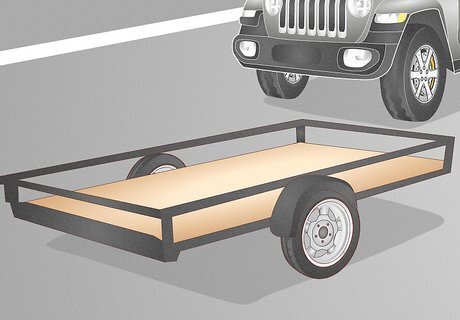
Buy or rent a hook-up trailer and other standard freight-hauling supplies. Purchase or lease the appropriate trailer for the loads you wish to haul, along with trailer tie-downs and come-alongs to ensure your trailer attaches properly. It may also help to purchase flags, a fire extinguisher, heavy duty magnets, emergency warning triangles, patch repair kits, and other items for interstate truck safety. Since trailers are expensive, it’s probably best to lease one when you’re starting out. Then, as you begin generating income from hotshot trucking and carving out your market, you’ll know which trailer is best for your business as time goes on.
Equip your truck with standard industry equipment.
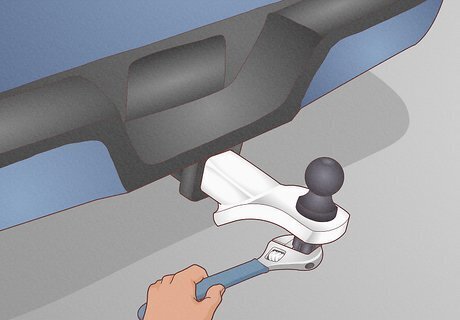
Ensure your truck is in-line with all DOT regulations. Once you’ve gotten all the items and paperwork to operate a hotshot truck, begin inspecting and equipping the vehicle itself. Install any hitches or other items. Have your DOT and MC numbers ready. Check your lights and ensure all the appropriate placards are visible if you plan to transport hazardous materials. Check here to ensure your truck is lit properly. Monthly costs for hotshot truck upkeep are usually in the $400 range.
Start looking for business.

Set your rates and start looking for loads to haul. Now that you have all the necessary paperwork, insurance, and equipment, it’s time to start transporting cargo to anyone who needs it. The best way to find clients is to check load boards like MercuryGate and DirectFreight to help match you to brokers who may need your services. When it comes to setting rates, standard charge is $1.50 per mile. Research your competitor’s rates and raise or lower this cost accordingly. Stick to the rule of “half the weight, half the rate.” If a load is only half your truck’s max weight, charge the client half price.













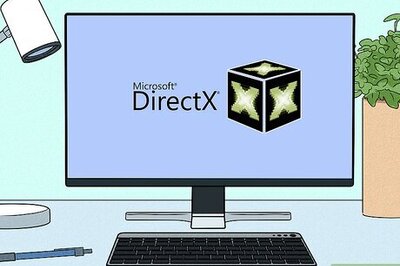






Comments
0 comment